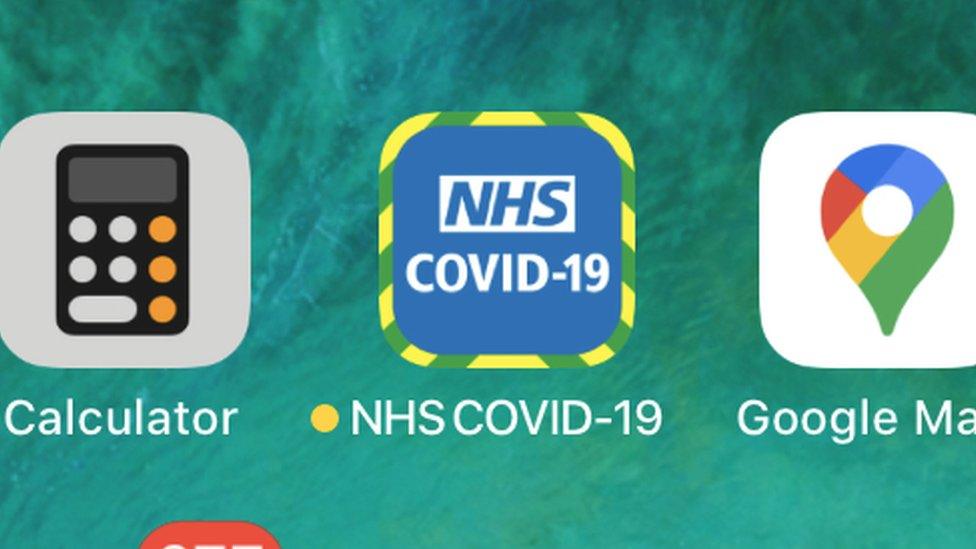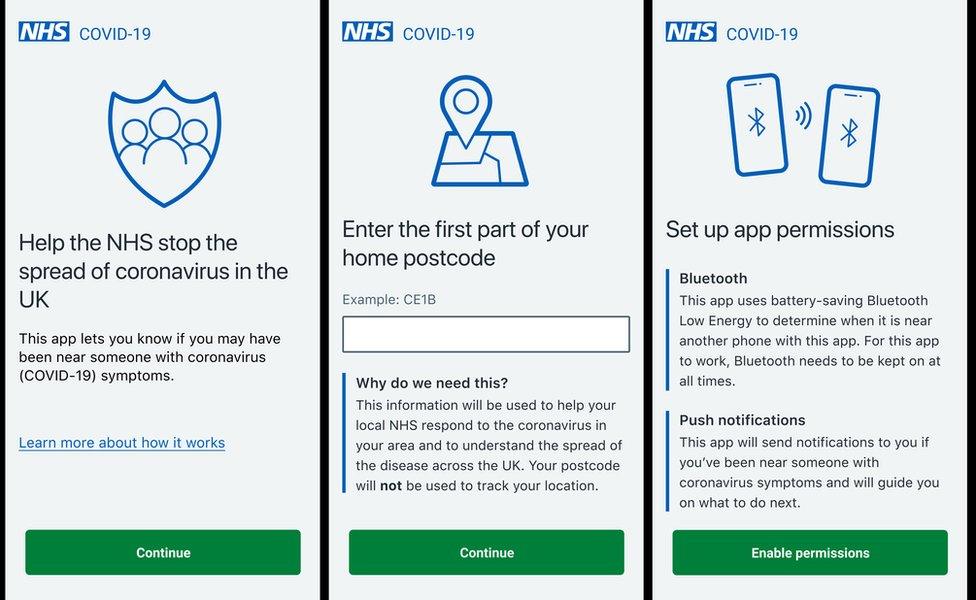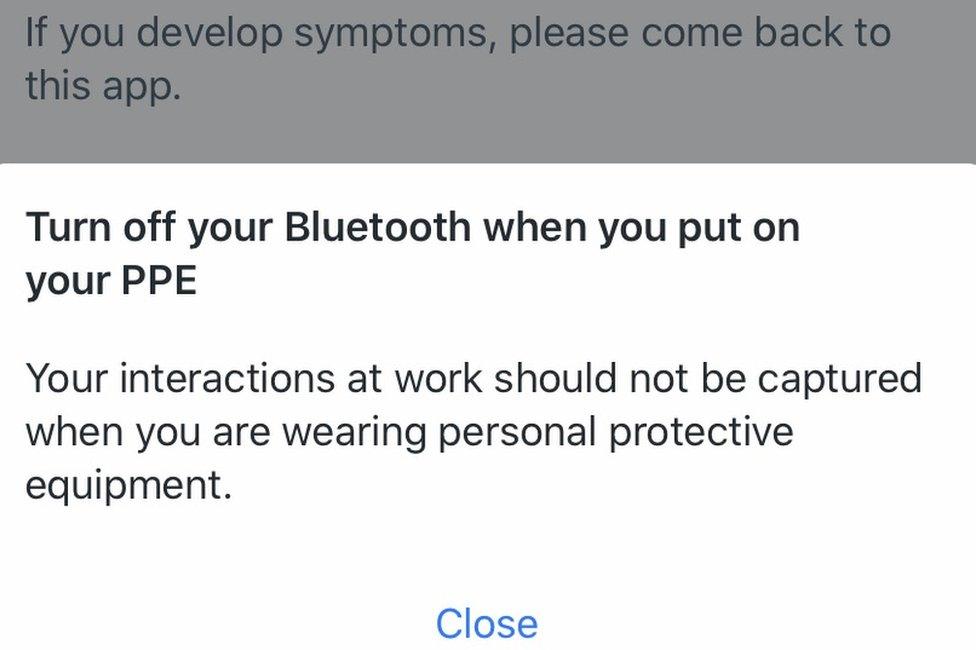Coronavirus: Hands on with NHS Covid-19 contact-tracing app
- Published

For an app with so much riding on it, NHS Covid-19 is at first sight very simple and extraordinarily unexciting.
At this stage, it is available to only NHS and council workers on the Isle of Wight.
On Thursday, other residents of the island will receive a leaflet containing a link that will trigger a download.
And eventually anyone will be able to download it directly from the UK versions of Apple's App Store and the Google Play Store.
I have been given special early access.
When you install it, you are asked to enter the first half of your postcode.
Then, you are asked to set up app permissions.
First, you have to allow the app to use Bluetooth Low Energy to determine when it is near another phone using the app, keeping Bluetooth on at all times.
Next, you approve push notifications so the app can alert you if you have been near someone with symptoms of the virus.
Finally, you end up on a very simple home screen.
It offers the current advice on stopping the spread of the virus and asks a question: "How are you feeling today?"
There is a menu option: "I feel unwell - I have a high temperature or continuous cough and want to know what to do next."
If you choose this, you are asked whether you have a high temperature or a continuous cough.
If you answer yes to either question, you are asked when the symptoms started.
If you are not on the Isle of Wight, you can submit this information but, at the moment, nothing more happens.

The symbol for the NHS app should soon become a common sight on people's smartphones
But if you are on the island, you are told to self-isolate and to call an 0800 number to have a swab test delivered to your home.
It also triggers alerts to those people with the app whose phones have been in contact with yours in recent days.
At first, these will be fairly cautious messages about observing social distancing.
But if a test comes back positive, contacts will be told to self-isolate.
Most of the time, however, there will be hardly any reason to interact with the app at all.
Some technical experts have said the NHS app will not work properly on an iPhone unless it is kept open and running in the foreground.
The team behind it insists this is not the case - although that is impossible for me to verify.

Users will be asked to enter the first part of their postcode but not their name or other personal details
What I can say is it does not appear to be a power hog, with just 2% of my battery used by the app over the past few hours.
By contrast, you won't be surprised to hear Twitter accounted for 25%.
Of course, as I am the only person for miles around with the app, I have not been having Bluetooth interactions with others, so I don't know whether that would have made a difference.
But VMWare Pivotal Labs - the software company contracted to build the product - told BBC News it should not change things significantly and battery usage should remain "very low".
There has also been concern the app might trigger too many false positives or fall victim to mischievous people claiming they had symptoms when they had none.
But there could be the opposite problem.
I have been told users should receive, on average, only one alert every six months, to say they had probably been in contact with someone infected.
With the Isle of Wight having a relatively low rate of infection, the trial could end up producing very little data - and might leave users wondering what all the fuss was about.
One thing I have learned is the decision on when to send alerts isn't quite as simple as it's sometimes been described.
So it's not just a case of: if Jack was within 2m (6ft) of Jill for 15 minutes or longer, then send an alert if he becomes ill.
Instead, the app uses three metrics to work out a risk score:
the proximity of the devices
the length of time the phones continued to detect each other
how infectious the person with the coronavirus was judged to be, based on how close the meeting happened to when they noticed their symptoms
Furthermore, the score is calculated by taking into account all the risky interactions an app user has had over a period of two weeks, rather than on just one occasion.
Another discovery is the developers have taken into account the fact some users will sometimes be wearing personal protective equipment.

This message has been placed in the app, for healthcare workers
A section marked "important instructions for healthcare workers" tells them to turn off Bluetooth "when you put on your PPE", to prevent those obviously in close contact with infected patients being told to stay home.
